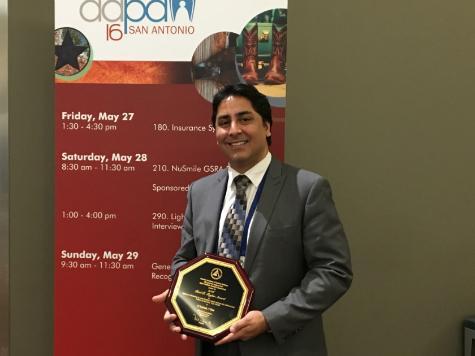 Dr. Vineet Dhar, BDS, MDS, PhD, associate professor and division chief of Pediatric Dentistry at UMSOD, currently serves as the president of the Maryland Academy of Pediatric Dentistry, a member of the Northeast District, Council on Post-doctoral Education, American Academy of Pediatric Dentistry, and an editorial board member of the journal Pediatric Dentistry.
Dr. Vineet Dhar, BDS, MDS, PhD, associate professor and division chief of Pediatric Dentistry at UMSOD, currently serves as the president of the Maryland Academy of Pediatric Dentistry, a member of the Northeast District, Council on Post-doctoral Education, American Academy of Pediatric Dentistry, and an editorial board member of the journal Pediatric Dentistry.
Given these credentials, it’s safe to assume that Dr. Dhar is an expert in the field. So when he co-authored a paper concluding that there was insufficient evidence of effectiveness for several common interventions to prevent early childhood caries (ECC) - the most common chronic oral disease for infants and young children - the wider world of pediatrics took notice.
Dr. Dhar received the Paul P. Taylor award from the American Academy of Pediatric Dentistry (AAPD) for the paper, titled “Evidence of Effectiveness of Current Therapies to Prevent and Treat Early Childhood Carries,” during the AAPD Annual Session on May 29th. This award is given to the most prestigious article published in Pediatric Dentistry as voted on by the AAPD editorial board.
Pediatric Dentistry is the bi-monthly official publication of the AAPD. It is internationally recognized as the leading journal in the field and it features the highest-quality peer-reviewed scientific articles, case reports, and abstracts of current pediatric dental research.
The criteria used for voting on the best manuscript includes the number of times it is downloaded by readers, how relevant it is to pediatric dentistry, and the overall quality of the article. Given the intense competition, Dhar’s award was a major accomplishment.
“It’s a great honor and a humbling experience to be recognized in the scientific world for the work we do,” he said.
Dr. Dhar’s paper examines the different techniques and strategies that are used to manage ECC in the efforts to determine the most effective preventive and treatment options. ECC is characterized by severe decay in the teeth of infants or young children.
In particular, the paper focuses on the quality of evidence related to self-applied and professionally applied fluorides, antimicrobial agents, fissure sealants, temporary restorations, and restorative care.
Dhar, in collaboration with co-author Dr. Svante Twetman of the University of Copenhagen, narrowed down the essential literature and findings from randomized clinical trials, abstracted all of the critical information from peer-reviewed articles, and evaluated the quality of evidence supporting particular interventions.
“We wanted to formulate and define a question of what we really needed to find out regarding these various interventions,” said Dr. Dhar.
The paper concluded that there was moderate and limited quality of evidence in support of fluoride toothpaste and fluoride varnish for ECC prevention, and insufficient evidence all other interventions. As a result, the conclusion of paper argued for the need for high quality research and to point out the knowledge gaps to be addressed in future studies.
“There’s a lack of substantial evidence supporting restorative treatment and a need to integrate other concepts of disease management to ensure long-term success,” said Dr. Dhar.
These findings have major implications for the field of pediatrics, and the paper resonated heavily with the readership of Pediatric Dentistry: it was downloaded more than any other manuscript that was nominated.
“The level of downloads shows you how relevant this work was,” said Dr. Norman Tinanoff, DDS ’71, professor in the Department of Pediatric Dentistry at UMSOD and a long-time colleague of Dr. Dhar’s.
Although the paper reveals that there is a lack of high-quality research regarding ECC interventions, Dr. Dhar encourages clinicians to take a “glass half-full” approach to the findings.
“This paper indicates that the informed clinician must combine best available scientific evidence with his/her own expertise as well as parents’ values and expectations,” he said, “the mapping of knowledge gaps disclosed in the paper is a call for intensified clinical research and points out the most pertinent topics to be addressed in ECC prevention and management.”
Interested in supporting UMSOD's Department of Pediatric Dentistry? Please visit the following page to learn more.



